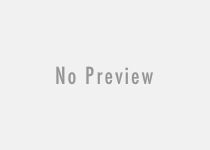U.S. Life Insurance Premiums Rise Driven by Indexed and Variable Products
In the first quarter of 2025, life insurance premiums in the United States saw a marked and significant increase, rising by an impressive 8% year-over-year to approach nearly $4 billion in total premiums collected. Despite this notable premium growth, the overall volume of policy sales remained relatively steady and flat during this period. The substantial increase in premium amounts was primarily fueled by strong and growing consumer demand for Indexed Universal Life (IUL) and Variable Universal Life (VUL) insurance products, which have steadily gained popularity among policyholders looking for more flexible and potentially rewarding options.
Indexed Universal Life (IUL) insurance products experienced an 11% increase in new premium inflows, driven largely by their attractive feature of offering market-linked growth potential combined with downside protection against market losses. At the same time, Variable Universal Life (VUL) products witnessed an even more striking surge, with premium growth exceeding 40%. This surge reflects consumers’ active pursuit of higher potential returns during a period characterized by robust stock market performance and favorable investment conditions that have made these products particularly appealing.
Why the Shift?
The shift in consumer behavior and preferences can be attributed to several interconnected factors. In the aftermath of the global pandemic, there has been a notable rise in financial awareness and a stronger emphasis on long-term financial planning among Americans. Additionally, the trend of rising interest rates has made life insurance products like IUL and VUL more attractive, as these policies offer better growth opportunities compared to more traditional insurance offerings. Moreover, the flexible premium structures inherent in these products allow consumers to adjust their contributions according to changing economic circumstances and personal financial goals. While whole life insurance policies experienced moderate gains during this timeframe, there was a slight decline in sales of term life and fixed universal life insurance policies, reflecting a broader shift in consumer priorities.
Consumer Preferences
An increasing number of Americans are now choosing permanent life insurance policies that combine both protection and investment potential. Millennials and Generation X buyers, in particular, are demonstrating a strong preference for hybrid insurance products that provide a balance of financial security along with savings and growth components. Insurance providers that have embraced digital onboarding processes, rapid underwriting capabilities, and user-friendly online management tools are reaping significant benefits from these evolving consumer trends. These enhancements attract more policyholders who value convenience, efficiency, and the ability to manage their policies easily through digital platforms.
Industry Outlook
Looking ahead, as equity markets continue to perform well and interest rates stabilize, the demand for Indexed Universal Life (IUL) and Variable Universal Life (VUL) insurance products is expected to remain strong throughout the latter part of 2025. Financial advisors are increasingly recommending these types of policies as key components of retirement planning and wealth transfer strategies, recognizing their potential to provide both growth and protection in an economic environment marked by uncertainty and fluctuating market conditions. This trend indicates a sustained interest in flexible, growth-oriented life insurance solutions that address the evolving financial needs of today’s consumers.
